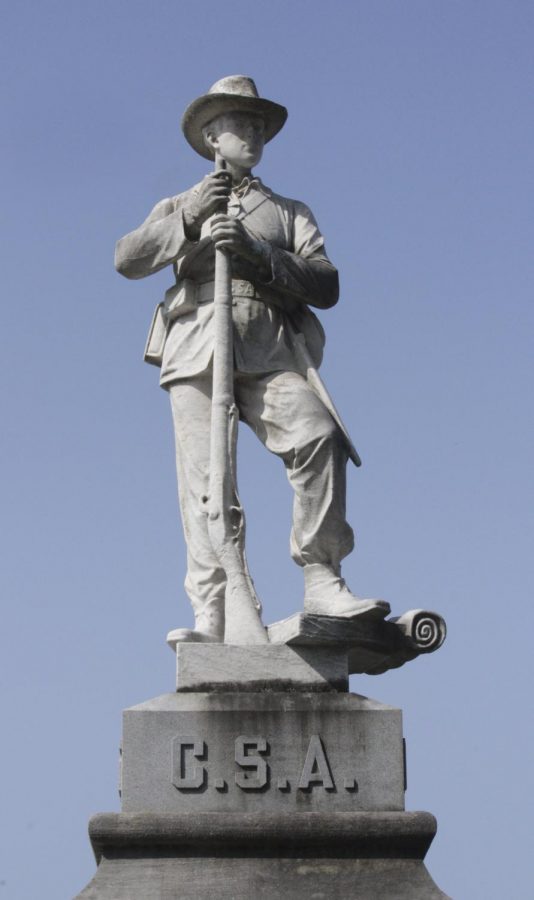Campus discusses national Confederate controversy
September 7, 2017
While opposition to Confederate monuments may be nothing new, recent events in the U.S. have brought debates on whether the statues should be torn down.
Last month, a rally occurred in Charleston, Virginia, over a statue of Gen. Robert E. Lee, with various groups protesting, which resulted in the death of a 32-year-old woman and at least 19 injured.
So, the question remains if Confederate statues should be torn down due to a connection to racism or kept as a part of heritage.
Some citizens believe the right to censor certain aspects of history can mean it is also possible to rewrite it completely and, thus, is ethically wrong.
Sophomore Tyler Stansbury said the statues should stay up to represent history.
“Taking a statue down is not going to help either cause on either side,” he said. “It’s more about the statement that it makes. It really teaches people that come (to our country) about our history.”
Meanwhile, others believe what the Confederacy stood for is morally evil and someone should take them down to prevent sending the wrong message to the younger generation.
Professor of History Lynne Rieff said the statues are inappropriate because the Confederacy stood for the right to own slaves.
“When it comes to the Civil War, no ifs, ands or buts about it, the root cause was about slavery,” she said.
The Florence community is no stranger to the controversy as there is a Confederate monument in front of the Lauderdale County Courthouse.
The monument is a statue of a male Confederate soldier in a private’s uniform tossing his knapsack to the ground that, according to its description, honors the dead Confederate soldiers of Lauderdale County.
However, during the dedication of the statue on April 25, 1903, H.A. Moody, a former medical doctor in Florence, discussed the “impassable barrier” between the South and North, and the belief African-Americans were not socially equal in the South.
Project Say Something is in the process of a campaign to erect a new monument beside the Confederate monument on the front grounds of the Lauderdale County Courthouse.
Graduate student Brian Murphy, a Project Say Something board member, said the new monument would help tell a more complete story of the community that includes the local black heritage.
“I think this can be a model of how small towns in the South can move forward with this debate,” he said. “Instead of having these violent confrontations (and) tearing monuments down, this can be a way of (saying), ‘Hey, how do we make sure everybody’s story is told? How do we represent our entire history?’”
The appearance of the statue would be decided with help from the community.
A 2011 Pew Research Center poll revealed that 30 percent of Americans had a negative reaction to seeing statues of former Confederate generals and, more specifically, the Confederate flag itself. Only 9 percent had a positive reaction, while the remaining participants had none at all.












